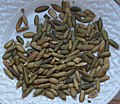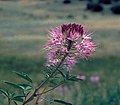Three Sisters Island (Tasmania), three small islands The Three Sisters (Alberta), three peaks in the Canadian Rockies near Canmore, Alberta The Three Sisters... 5 KB (603 words) - 17:39, 22 February 2024 |
 | Milpa (redirect from Milpa agriculture) gardening Inga alley cropping Maya diet and subsistence Terra preta Three Sisters (agriculture) (winter squash, maize (corn), and climbing beans) Chapulín de... 5 KB (533 words) - 03:51, 17 January 2024 |
 | History · Popcorn: Ingrained in America's Agricultural History ·". www.nal.usda.gov. U.S. DEPARTMENT OF AGRICULTURE. Retrieved 16 January 2024. Stromberg... 30 KB (3,274 words) - 18:09, 20 April 2024 |
 | in length for some large war canoes. The main agricultural crops of the region were the Three Sisters : winter squash, maize (corn), and climbing beans... 27 KB (2,573 words) - 18:04, 30 January 2024 |
 | Maize was next planted. Indian planting techniques are called Three Sisters agriculture. About five maize seeds were sown in a low mound of soil. The... 18 KB (2,395 words) - 16:49, 29 June 2023 |
 | Intercropping (category Sustainable agriculture) system Monoculture Organic farming Permaculture Sustainable agriculture Three Sisters (agriculture) Andrews, D. J.; Kassam, A. H. (2015). "The Importance of... 14 KB (1,585 words) - 09:04, 20 March 2024 |
 | located near wide areas of well-watered floodplain suitable for maize agriculture, although smaller villages exist in upland areas. Ceramics, especially... 23 KB (2,639 words) - 20:21, 20 April 2024 |
 | Pre-Columbian era (redirect from Pre-Columbian agriculture) pre-Columbian civilizations were marked by permanent settlements, cities, agriculture, civic and monumental architecture, major earthworks, and complex societal... 89 KB (9,869 words) - 22:38, 23 April 2024 |
 | Columbian exchange (category History of agriculture) and plants from the New World to the Old, which radically transformed agriculture in both regions. His research made a lasting contribution to the way... 64 KB (6,569 words) - 07:32, 27 April 2024 |
developed a complex culture based on estuarine fisheries rather than agriculture. Calusa territory reached from Charlotte Harbor to Cape Sable, all of... 27 KB (3,789 words) - 01:43, 23 April 2024 |
 | 2, 2013. Landon, Amanda J. (2008). "The "How" of the Three Sisters: The Origins of Agriculture in Mesoamerica and the Human Niche". Nebraska Anthropologist:... 13 KB (1,290 words) - 01:14, 2 May 2024 |
near-vertical sandstone surfaces. The steps are usually two to three inches deep, and three to four inches in width and height. Moki steps are often found... 2 KB (209 words) - 22:34, 2 April 2024 |
 | social organization could also have resulted from adoption of full-scale agriculture. Conclusive reasons for the evident dispersal of the people have not... 36 KB (3,906 words) - 07:02, 27 April 2024 |
















